Introduction
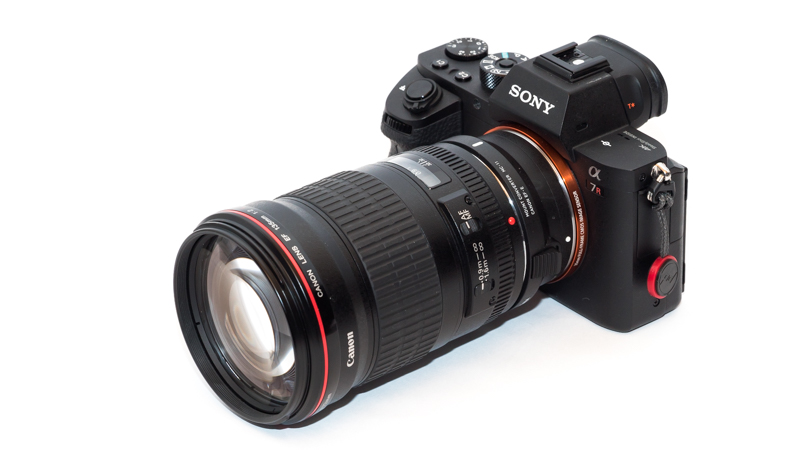
The Canon EF 135mm 2.0L is often referred to as being the “Lord of the Red Rings” and many think it is one of the – if not the – best and sharpest among all L-lenses. On the other hand the optical design dates back more than 20 years now, so let us find out how the lens performs when coupled with the 42mp A7rII!
Sample Images

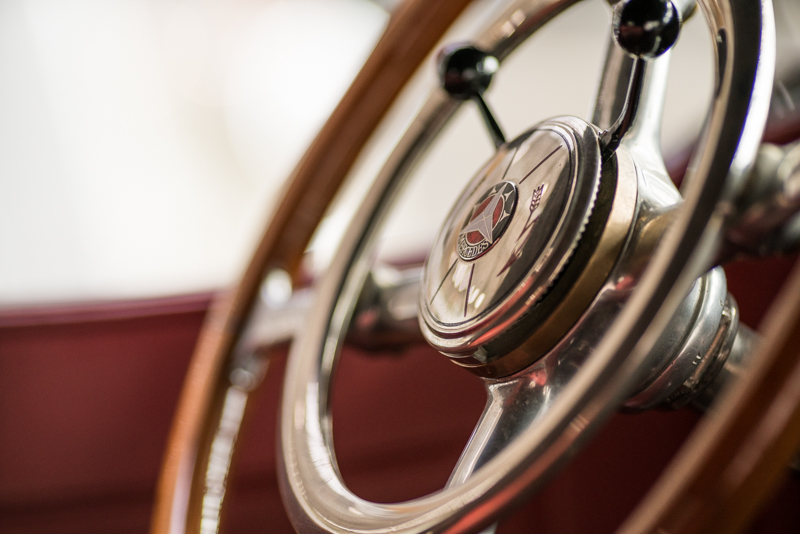
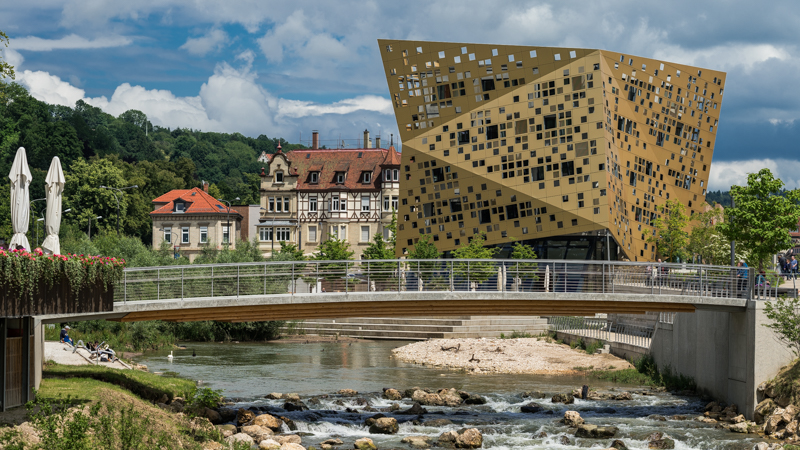
Specifications / Version History
There has been a Canon FD 135mm 2.0 with a simpler optical design in the past, apart from that the current EF 135mm 2.0L is on the market since 1996 with unchanged optics and one of the oldest L-lenses in the current lineup. It has the following specifications:
-
- Diameter: 83 mm
- Field of view: 18° (diagonally)
- Length: 112 mm
- Weight: 708g
- Filter Diameter: 72 mm
- Number of Aperture Blades: 8
- Elements/Groups: 10/8
- Close Focusing Distance: 0.9 m
- Maximum Magnification: 1:5
- Mount: Canon-EF
You may also have a look at Canon’s official page.
You can get one used for 700$/700€ on ebay.com/ebay.de (affiliate links) or new for 1000$/960€ on Amazon.com/Amazon.de/B&H (affiliate links).
Handling / Build Quality
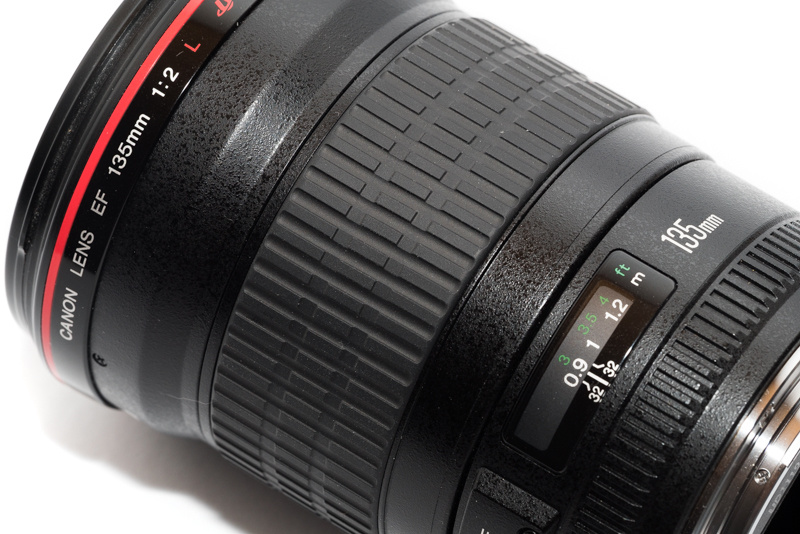
The lens is part of Canon’s L grade professional lenses so one would expect very good build quality and handling. Unlike the 70-200mm 4.0 L recently reviewed by me the outer casing seems to be mostly made of plastic, same goes for the filter thread. Nevertheless the lens feels very substantial and by no means cheap.
It takes about 120° to turn the very broad focusing ring from infinity to 0.9 m. The focusing ring is also not fly-by-wire and there is no slack when changing the direction of rotation (very) often seen on newer Nikon lenses.
Nothing moves externally and the focus ring is easily operated. In addition there is an AF <-> MF button and a focus limiter.
The lens hood is very big, very plasticy but is at least covered with velvet inside. A tripod collar is not available for this lens.
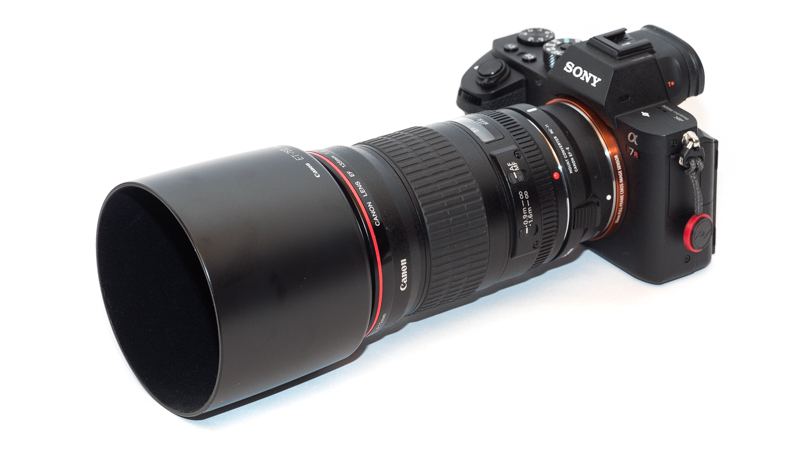
Personally I think the handling qualities of this lens are very good, but it is also about as big and as heavy as I want a lens for the A7 cameras to be (when using it handheld) and it is a better fit for the 2nd generation cameras in terms of balance.
Autofocus
I have only tested this lens with the Sigma MC-11(300$, affiliate link). Which works quite good and snappy in decent lighting conditions as there is rarely any hunting even when going from infinity to the minimum focus distance.
In the dark things don’t look as great: there is much more hunting involved so I often switched to manual focus in the dark.
Vignetting
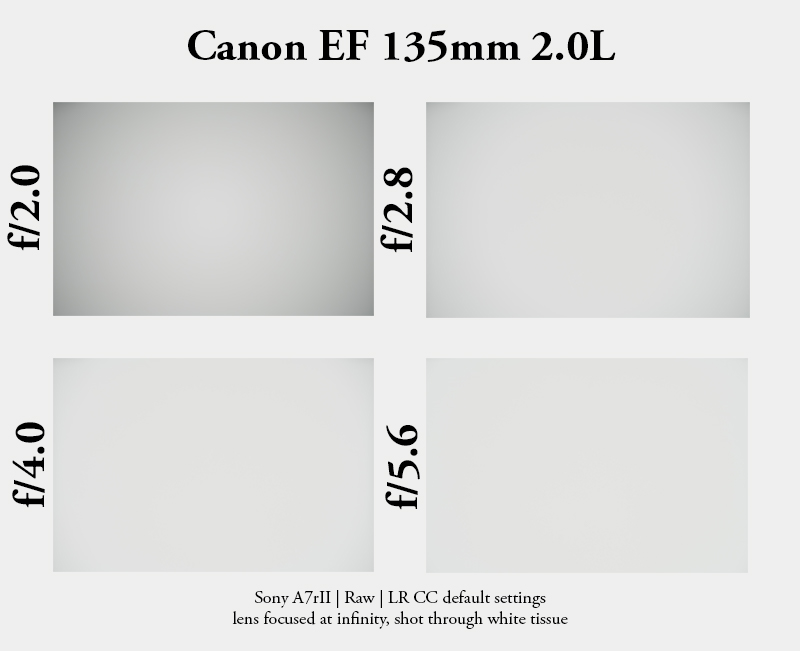
Wide open there is visible vignetting of roughly 1.7 EV, stopped down to f/5.6 it is negligible. There is also a Lightroom profile for correcting this.
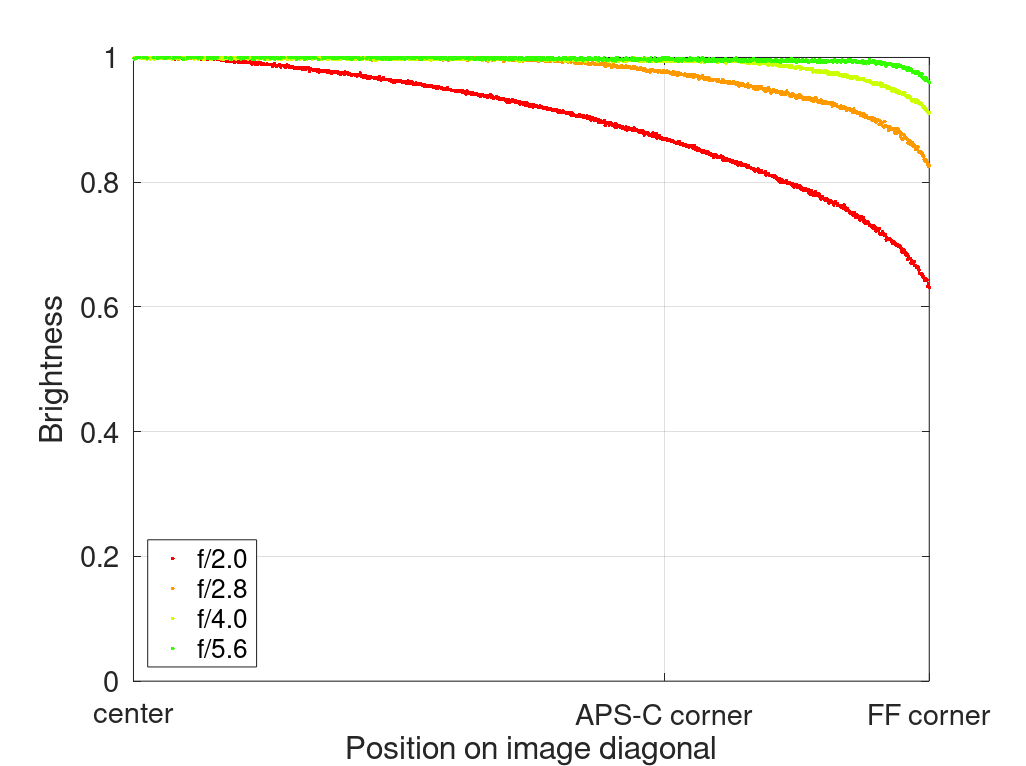
It is recommended to have a look at this article first to get an idea how this brightness graph works.
Sharpness
infinity

Wide open the lens is fully usable right into the corners and only a tad less contrasty compared to f/2.8 to f/11 but I wouldn’t hesitate using this lens wide open at all. This is still an excellent performance, even more so considering the lens design dates back 20 years now.
close focus
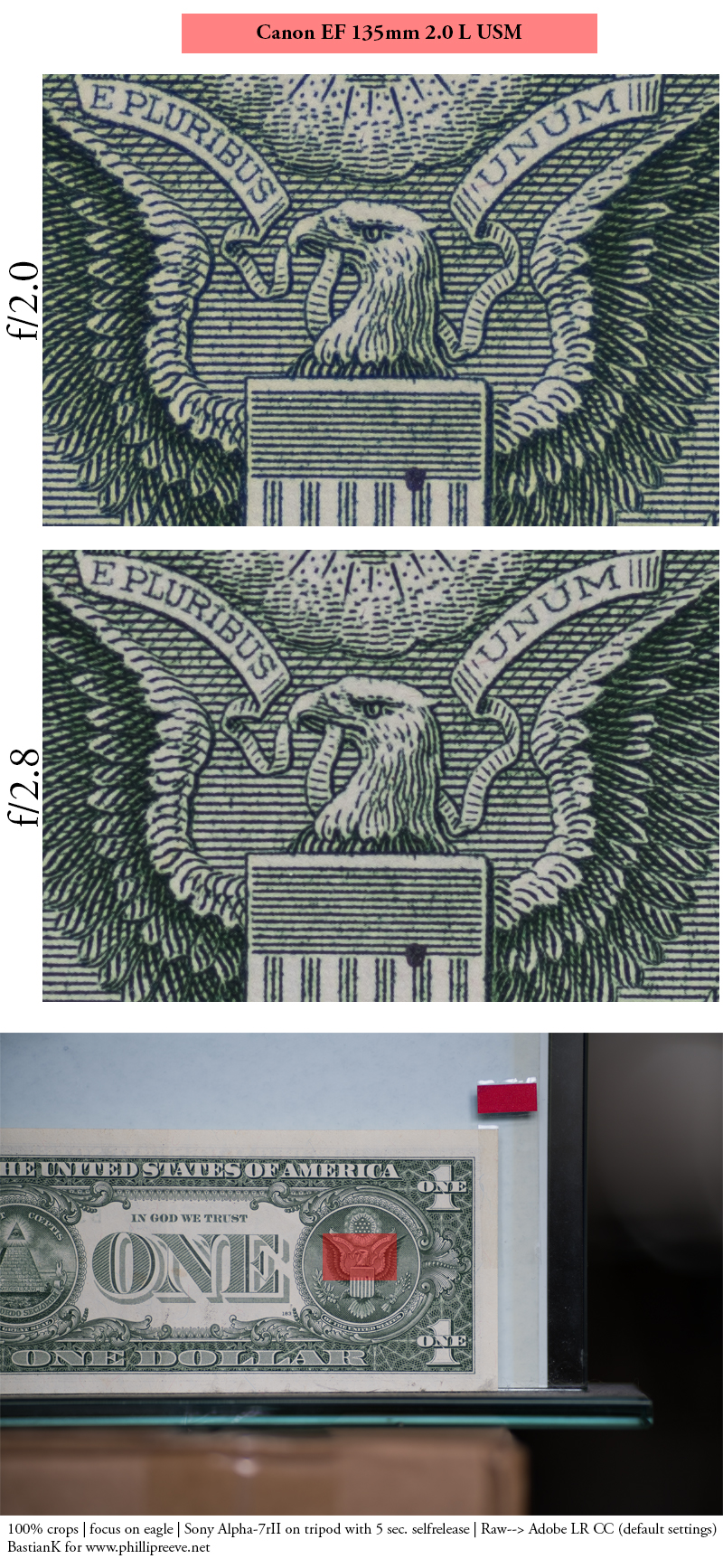
The performance near the minimum focus distance is excellent as well, even wide open with the 42mp A7rII and looking at 100% crops. In the center I can hardly see any improvements on stopping down further.
Flare resistance
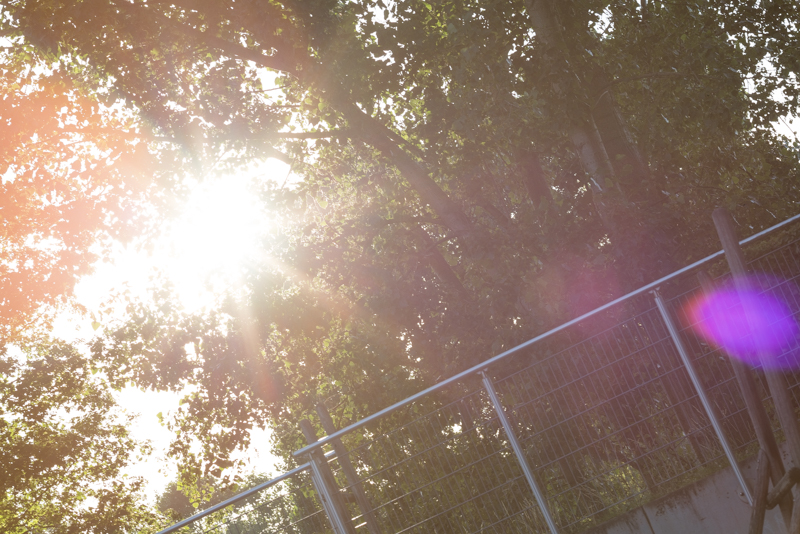
This is definetly the weak spot of the lens. With the sun inside the frame there is a tremendous amount of ghosts, with the sun outside the frame veiling flare becomes a problem and the hood – despite being huge – doesn’t really help here.
Sony A7rII | Canon EF 135mm 2.0 L | f/5.6 | before no lens hood / after lens hood mounted
Coma
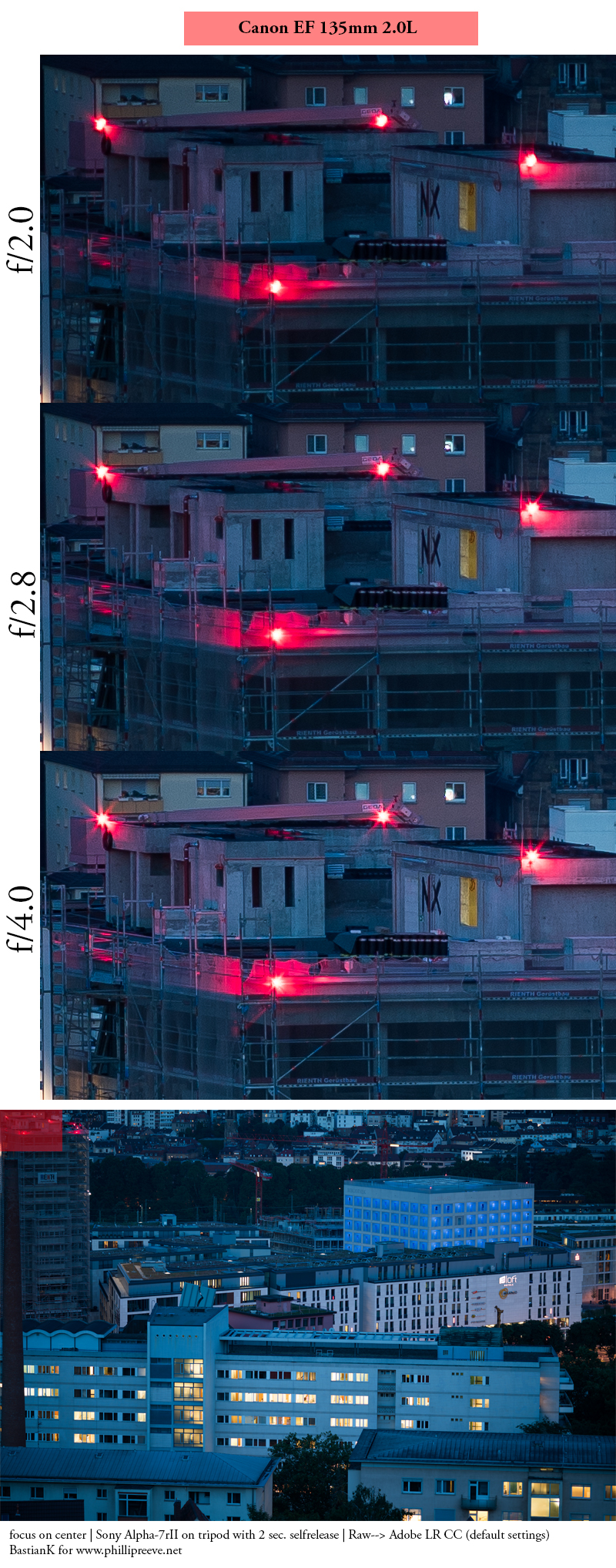
Wide open and stopped down to f/2.8 you can spot some slight coma in the corners. Stop down to f/4.0 and the problem goes away.
Distortion
There is only an absolutely negligible amount of pincushion distortion with no field relevance.
Bokeh

The very smooth bokeh is one of the main selling points of this lens. There is also hardly any distracting outlining and no onion-ring like structure in the light discs. Only the cat’s eye effect – describing light discs becoming ovals towards the borders and corners – is quite pronounced.


Sunstars

Between f/2.0 and f/4.0 the sunstars are not so great, between f/5.6 and f/16 they are quite decent. Compared to the 70-200mm 4.0L the performance is a little bit better here. But this is more of a personal bias, so you may come to a different conclusion when looking at the samples.
Chromatic aberrations
longitudinal
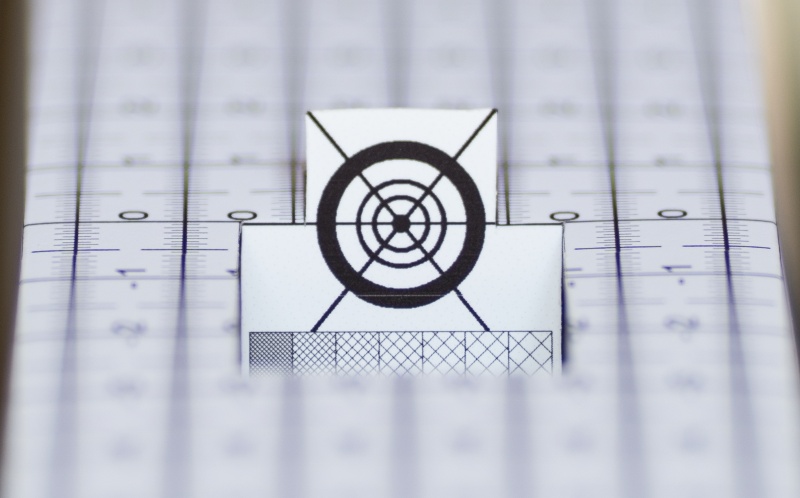
Longitudinal CA (loCA) are definetly present and I would even consider them a weakness of the lens. Nevertheless I would describe the performance here as average, there are many fast lenses which perform much worse.
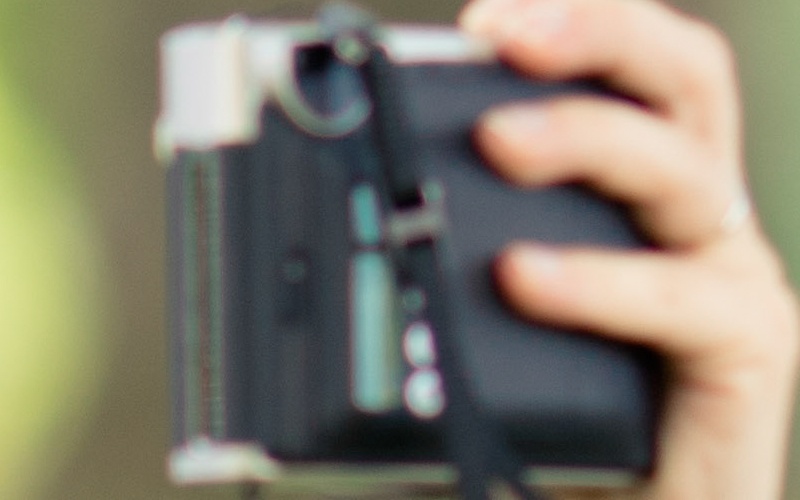
lateral
Sony A7rII | Canon EF 135mm 2.0 L | f/8.0 | CA 100% crop before/after extreme corner
The lateral CA correction is almost perfect. You can spot a tiny hint of CA at one of the edges, but this is absolutely negligible in real world use.
Alternatives
Samyang 135mm 2.0 ED UMC:
Check out Jannik’s review. Better loCA correction, otherwise they look pretty similar to me. Also cheaper, even more so when taking the necessary adapter for the Canon into consideration.
Zeiss APO Sonnar T* 135mm 2.0:
Rumored to be one of the lenses with the highest resolving power you can buy today. Better loCA correction, bigger, heavier, way more expensive.
Sony/Zeiss Sonnar T* 135mm 1.8 SAL ZA:
Check out Phillip’s review as I haven’t used this lens yet. A tad faster, bigger, heavier and more expensive.
Conclusion
good
|
average
|
not good
|
Even on today’s cameras the Canon EF 135mm 2.0L is still an excellent performer. Not only does it offer astonishing sharpness at all distances, it also manages to combine this with a wonderful bokeh and it has therfore already become one of my most favourite portrait lenses and easily so.
From a technical point of view the work against bright light is nothing to write home about. From my personal standpoint I sometimes like having a little flare in my portrait shots so this doesn’t bother me too much, but your mileage may vary here. The loCA correction could also be a little better, but as I am used to shoot portraits with the Nikon AF-S 85mm 1.4G things doesn’t look so bad here in comparison.
I also got word this lens does not work very well with the cheaper adapters, but I have only used it with the Sigma MC-11 personally and was mostly happy with it’s performance.
So, who is this lens for? Anyone, who looks for a very good, fast portrait tele with excellent sharpness and very smooth bokeh. A few years ago this lens was pretty much without competition. Today it might be worth taking a closer look at the Samyang 135mm 2.0, which also offers great performance at a cheaper price point, if you can live with it’s lack of autofocus.
You can get one used for 700$/700€ on ebay.com/ebay.de (affiliate links) or new for 1000$/960€ on Amazon.com/Amazon.de/B&H (affiliate links).
Sample Images

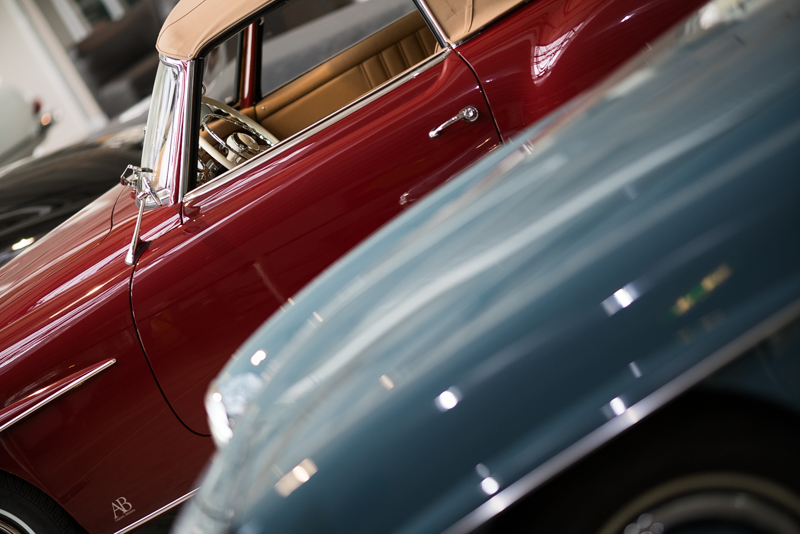

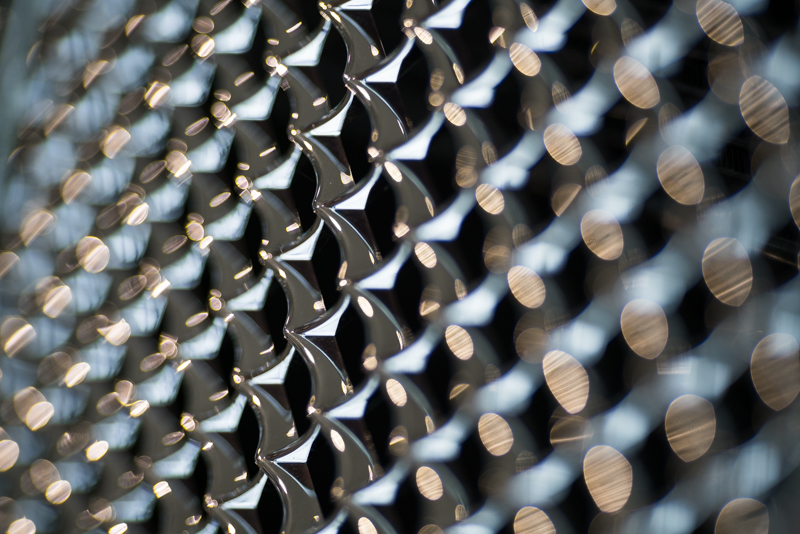
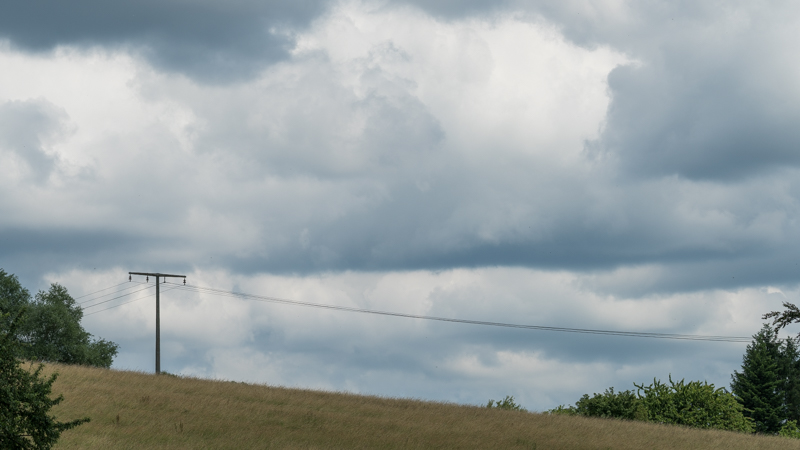
Further Reading
- Leica Summicron 90mm 2.0 pre Asph Review
- Voigtlander 10mm 5.6 Hyper Wide Heliar Review
- Canon nFD 135mm 2.8 Review
Support Us
Did you find this article useful or just liked reading it? Treat us to a coffee!
![]()
![]()
![]() via Paypal
via Paypal
This site contains affiliate links. If you make a purchase using any of the links marked as affiliate links, I may receive a small commission at no additional cost to you. This helps support the creation of future content.
Latest posts by BastianK (see all)
- Review: Viltrox AF 35mm 1.2 FE LAB - December 17, 2025
- Analogue Adventures – Part 47: Tübingen - December 17, 2025
- Review: Zeiss Milvus 25mm 1.4 Distagon - December 13, 2025




Excellent review as usual, Bastian. I was on the fence for months on a fast portrait lens, and your review helped finally put me over the edge on getting the 135/2.0L. Keep up the good work!
Thank you Keith, I am pretty sure you won’t be disappointed!
Thanks for the great review Bastian! Not a #1 lens I’d be looking for in the landscape realm, but absolutely one I’d rent for portraiture. Out of curiosity, now that you’ve used it (and I presume others) on the A7RII, how far are you comfortable cropping on that sensor with a uber sharp lens like this 135L? I wonder if it could resolve to crop down to 200mm with no issues.
It is funny you are asking because just yesterday I wrote Phillip “my 200mm lens for the A7rII will be cropping out of the 135mm 2.0L” 🙂
You have to really nail focus wide open, otherwise: no reservations here in case 18mp are enough.
Hehe, ouch, I think a certain 200mm isn’t faring so well. To be fair though this Canon 135 looks stunning optically, just like the Samyang.
More than one 200mm isn’t faring so well to be honest :/
This 135mm is a pretty new one from 2015, maybe that is the reason for the great performance.
How do the Minolta’s fare so far?
I think the Samyang still is quite bit better as far as CA is concerned but personally I would probably go for the EF135 as well.
The Minolta 200mm 2.8 APO seems to have very nice bokeh (and very fast AF with the LA-EA4), the MC 200mm 4.0 has nothing about it that stands out to me (so far) :/
BastianK, have you saved the serial number of this lens? I’m curious to find out which sn refers to a sample manufactured in 2015 or 2016 or even later.
No I haven’t. Good indicator is when it comes with a serial #no matching silver box instead of the old black/white/red one 🙂
Interesting about the AF on the Sigma; I have the metabones III and a cheap chinese adapter, and it’s completely hopeless on them both. Maybe I’ll try a Sigma – if I could get decent AF for portraits I wouldn’t be temped to shell out a fortune if and well a native solution comes out (which I would expect to cost $US2000). Does eyeAF work??
As far as I know the Sigma adapter only offers Eye-AF with the newer Sigma lenses (Art, Contemporary and Sport), but I will double check on the weekend and come back to you.
I have this lens and don’t use it that often. For some reason I usually go with the Canon 200mm 2.8 L. Something about the rendering of the 200mm is preferable to me. I do use the 135mm f2 for indoor get togethers and meetings where it really shines with portraits.
Kann man das objektiv auch an die sony a7 machen?
Ja, dort muss man aber auf den AF verzichten
This is a great review of a great lens. I wish one of you reviews the similarly made 200/2.8 L also.
GM85 = 130/2 on crop
I will be interested in a comparison of the above if possible.
A “little late”.
I owned this marvelous lens for years.
Wonderful for the snaps I did.
I used it on a Sony 6500 and an a7r3 with a Sigma MC11. Exactly as you quoted.
I’m debating with myself whether this lens with MC-11, or the Batis 135. Costs would be around the same as I have to buy the adapter as well. Would use it on the A9. If anyone can give some input about autofocus performance with the latest firmware (camera and adapter likewise) I would appreciate that a lot.
I’ve been using 135mm F2L for about a year. I’ve tried it on A7m3, A7r4, with both MC-11 and Metabones V. I’ve always updated my cameras and adapters with latest firmware.
For autofocus, Metabones V is somewhat faster because it feels like it has shorter operation cycles, focusing and compensating focus a bit more that MC-11 in the same period. But both has quite similar performance all in all, and it is not totally native level speed and accuracy: it hunts a lot more if the subject is not perpendicular to the camera orientation, or not in the center part of 9 split frame, and it can’t keep up with fast moving subjects on Z-axis(depth). Burst rates are also limited by focusing capability.(3 FPS or below on both a7m3, a7r4). I believe a9 would do better though.
I’m going to sell my 135mm F2L when Tamron 70-180 F2.8 is coming out. I was really satisfied its optical performance and my copy is very well centered, but my nephew is much faster than I expected and I need a faster focusing lens.
Any one please help i am using a7iii and Viltrox ef to e mount nex iv and the Manual focus is not working on this Lens Please help autofocus is working but manual focus when i turn the Focus ring is not working please help
If I use in camera MF switch I cannot switch to manual focus too but if you use the lenses MF switch it works. Focus motor is switched OFF and I can focus mechanically via lenses focus ring.
With Sigma Adapter I get focus peaking working.
One more remark,
the Canon EF L135/2 is the only 135mm lens I know that can be combined with the teleconverter (Extender). You can get 2×135 ~ 270/4 equivalent. It can give you additional flexibility.